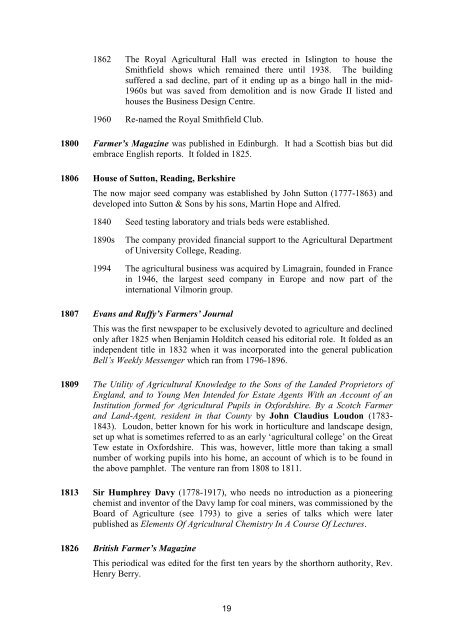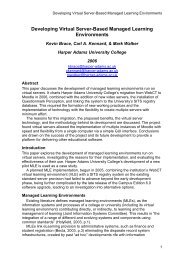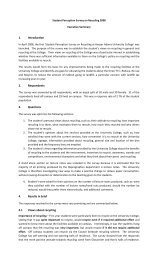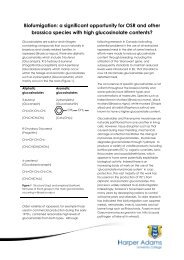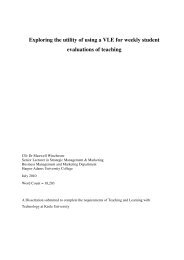a short history of agricultural education and research
a short history of agricultural education and research
a short history of agricultural education and research
You also want an ePaper? Increase the reach of your titles
YUMPU automatically turns print PDFs into web optimized ePapers that Google loves.
1862 The Royal Agricultural Hall was erected in Islington to house theSmithfield shows which remained there until 1938. The buildingsuffered a sad decline, part <strong>of</strong> it ending up as a bingo hall in the mid-1960s but was saved from demolition <strong>and</strong> is now Grade II listed <strong>and</strong>houses the Business Design Centre.1960 Re-named the Royal Smithfield Club.1800 Farmer’s Magazine was published in Edinburgh. It had a Scottish bias but didembrace English reports. It folded in 1825.1806 House <strong>of</strong> Sutton, Reading, BerkshireThe now major seed company was established by John Sutton (1777-1863) <strong>and</strong>developed into Sutton & Sons by his sons, Martin Hope <strong>and</strong> Alfred.1840 Seed testing laboratory <strong>and</strong> trials beds were established.1890sThe company provided financial support to the Agricultural Department<strong>of</strong> University College, Reading.1994 The <strong>agricultural</strong> business was acquired by Limagrain, founded in Francein 1946, the largest seed company in Europe <strong>and</strong> now part <strong>of</strong> theinternational Vilmorin group.1807 Evans <strong>and</strong> Ruffy’s Farmers’ JournalThis was the first newspaper to be exclusively devoted to agriculture <strong>and</strong> declinedonly after 1825 when Benjamin Holditch ceased his editorial role. It folded as anindependent title in 1832 when it was incorporated into the general publicationBell’s Weekly Messenger which ran from 1796-1896.1809 The Utility <strong>of</strong> Agricultural Knowledge to the Sons <strong>of</strong> the L<strong>and</strong>ed Proprietors <strong>of</strong>Engl<strong>and</strong>, <strong>and</strong> to Young Men Intended for Estate Agents With an Account <strong>of</strong> anInstitution formed for Agricultural Pupils in Oxfordshire. By a Scotch Farmer<strong>and</strong> L<strong>and</strong>-Agent, resident in that County by John Claudius Loudon (1783-1843). Loudon, better known for his work in horticulture <strong>and</strong> l<strong>and</strong>scape design,set up what is sometimes referred to as an early ‘<strong>agricultural</strong> college’ on the GreatTew estate in Oxfordshire. This was, however, little more than taking a smallnumber <strong>of</strong> working pupils into his home, an account <strong>of</strong> which is to be found inthe above pamphlet. The venture ran from 1808 to 1811.1813 Sir Humphrey Davy (1778-1917), who needs no introduction as a pioneeringchemist <strong>and</strong> inventor <strong>of</strong> the Davy lamp for coal miners, was commissioned by theBoard <strong>of</strong> Agriculture (see 1793) to give a series <strong>of</strong> talks which were laterpublished as Elements Of Agricultural Chemistry In A Course Of Lectures.1826 British Farmer’s MagazineThis periodical was edited for the first ten years by the <strong>short</strong>horn authority, Rev.Henry Berry.19


